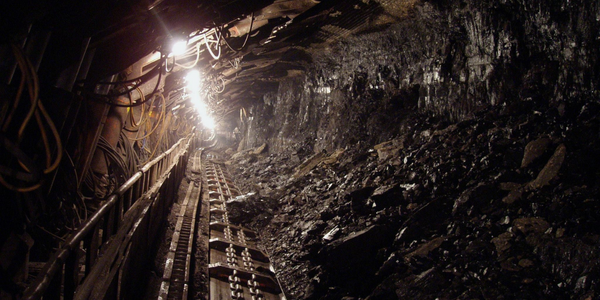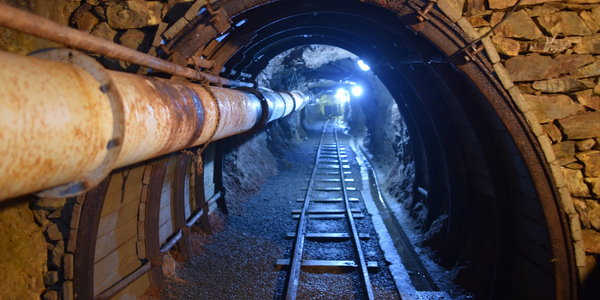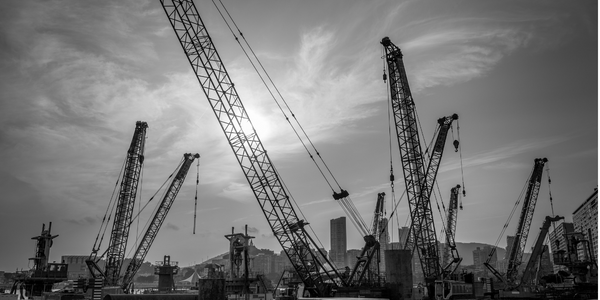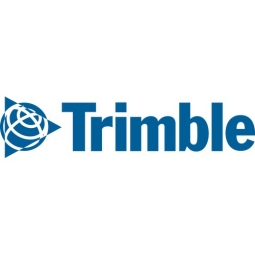Customer Company Size
Mid-size Company
Region
- America
Country
- United States
Product
- Trimble R8 GNSS Receiver
- Trimble VRS™ technology
- Trimble TSC2® Controller
- Trimble VX™ Spatial Station
- Trimble GX 3D Scanner
Tech Stack
- Trimble Survey Controller™ Software
- Trimble PointScape Software
Implementation Scale
- Departmental Deployment
Impact Metrics
- Digital Expertise
- Productivity Improvements
Technology Category
- Analytics & Modeling - Real Time Analytics
- Networks & Connectivity - Global Navigation Satellite System (GNSS)
- Sensors - Camera / Video Systems
Applicable Industries
- Mining
Applicable Functions
- Field Services
- Maintenance
Use Cases
- Machine Condition Monitoring
- Remote Asset Management
Services
- System Integration
- Hardware Design & Engineering Services
About The Customer
V3 Companies is an Illinois-based consulting firm specializing in engineering, construction, and environmental services. With a focus on providing innovative solutions, V3 Companies has established itself as a leader in the industry, offering a wide range of services to clients across various sectors. The company is known for its expertise in handling complex projects, particularly in challenging environments such as underground mining operations. V3 Companies' commitment to leveraging advanced technology and its ability to adapt to unique project requirements make it a preferred partner for clients seeking efficient and effective solutions. In the case of Mining International’s limestone quarry in Joliet, Illinois, V3 Companies was tasked with conducting a topographic survey of a tunnel, a project that required overcoming significant logistical and environmental challenges.
The Challenge
The task of conducting a topographic survey in Mining International’s limestone quarry in Joliet, Illinois, presented several challenges. The tunnel, which is 488 meters long, 7 meters high, and 6 meters wide, was originally used by large dump trucks to transport rock to the surface. However, as the mine expanded, a crushing plant was built, and a conveyor belt was installed to transport the crushed rock to the surface. The conveyor was hung from the tunnel ceiling to minimize disruptions, necessitating profiles of the tunnel’s ceiling for offsite system construction. V3 Companies faced challenges such as absolute darkness, transport issues, working on high platforms, and establishing control in a highly variable environment. Heavy truck traffic and daily road grading ruled out control set in the tunnel floor, requiring innovative solutions for control point establishment.
The Solution
To address the challenges of conducting a topographic survey in the limestone quarry, V3 Companies utilized Trimble’s Connected Site™ solutions. They established surface control using a Trimble R8 GNSS Receiver linked to the Precision Midwest Real Time Network (RTN) with Trimble VRS™ technology. This setup allowed them to extend control into the tunnel using the Trimble TSC2® Controller and Trimble VX™ Spatial Station. Due to heavy truck traffic and daily road grading, control points were set in the tunnel walls using threaded rods and prisms. The Trimble GX 3D Scanner, controlled by a laptop and Trimble PointScape Software, was used for scanning, with the Trimble VX employed for tight spots. Scans were assembled into a point cloud, with scan intervals set to 15 cm to keep file sizes manageable. For setting out bolt holes in the tunnel ceiling, a boom truck and a reversed prism were used, with an inverted rod and flashlight aiding visibility. The mine’s diesel-only policy necessitated the use of a diesel truck to power the scanners and provide lighting.
Operational Impact
Quantitative Benefit

Case Study missing?
Start adding your own!
Register with your work email and create a new case study profile for your business.
Related Case Studies.

Case Study
Underground Mining Safety
The goal was to produce a safety system to monitor and support underground mining operations; existing systems were either too simple (i.e. phone line) or overly complex and expensive, inhibiting deployment, and providing little-to-no support in event of an accident. Given the dangerous nature of the mining work environment and the strict regulations placed on the industry, the solution would have to comply with Mine Safety and Health Administration (MSHA) regulations. Yet the product needed to allow for simple deployment to truly be a groundbreaking solution - increasing miner safety and changing daily operations for the better.

Case Study
Mining Firm Quadruples Production, with Internet of Everything
Dundee Precious Metal’s flagship mine, in Chelopech, Bulgaria, produces a gold, copper, and silver concentrate set a goal to increase production by 30%. Dundee wanted to increase production quality and output without increasing headcount and resources, improve miner safety, and minimize cost.

Case Study
Fastenal Builds the Future of Manufacturing with MachineMetrics
Fastenal's objective was to better understand their machine downtime, utilization, quality issues, and to embrace cutting-edge manufacturing technology/process improvement capabilities to bring their team to the next level. However, there was a lack of real-time data, visualization, and actionable insights made this transition impossible.

Case Study
Joy Mining Systems
Joy equipment faces many challenges. The first is machine integration and control. The business end of the machine has a rapidly-spinning cylinder with 6-inch diamond-studded cutting teeth. It chews through rock at rates measured in tens of tons per minute. The system grinds through the rock in front, creating a rectangular mine tunnel. Hydraulic lifters support the ceiling as the machine moves forward. Automated drills and screws drive 3-ft long screws into the ceiling to stabilize it. The rock and coal fall into a set of gathering "fingers" below the cutting cylinder. These fingers scoop up the rock and coal and deposit it onto a conveyor belt. The conveyor passes under the machine and out the back. A train of conveyor belt cars, up to a mile long, follows the cutter into the mine. The rock shoots along this train at over 400 feet per minute until it empties into rail cars at the end. Current systems place an operator cage next to the cutter. Choking dust (potentially explosive), the risk of collapse and the proximity of metal and rock mayhem make the operator cage a hazardous location.

Case Study
Improved Monitoring in Industrial Manufacturing Facility
When your crane is moving tons of magma-hot iron, you can’t afford an unexpected failure. McWane Ductile knew monitoring the crane motor metrics within their facility could help prevent a mechanical failure that would strand an enormous bucket of molten metal overhead. Unfortunately, their legacy wired monitoring system couldn’t work with moving objects in this extreme environment. If they could integrate wireless capabilities into their existing equipment they could extend their monitoring capabilities without starting over from scratch.








